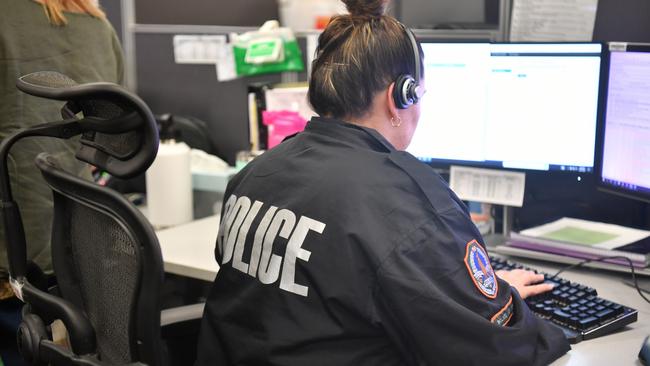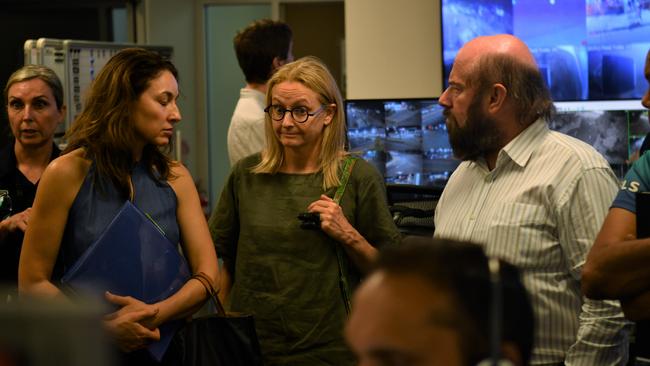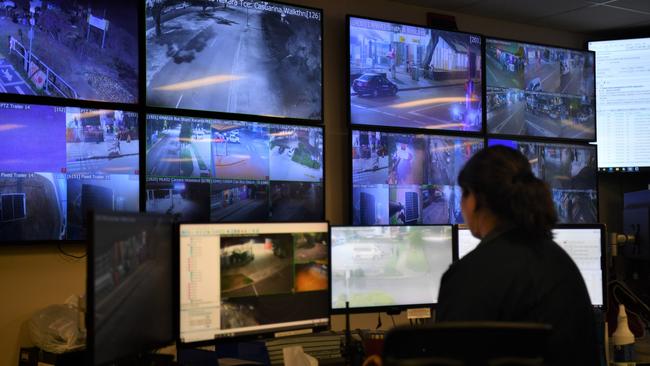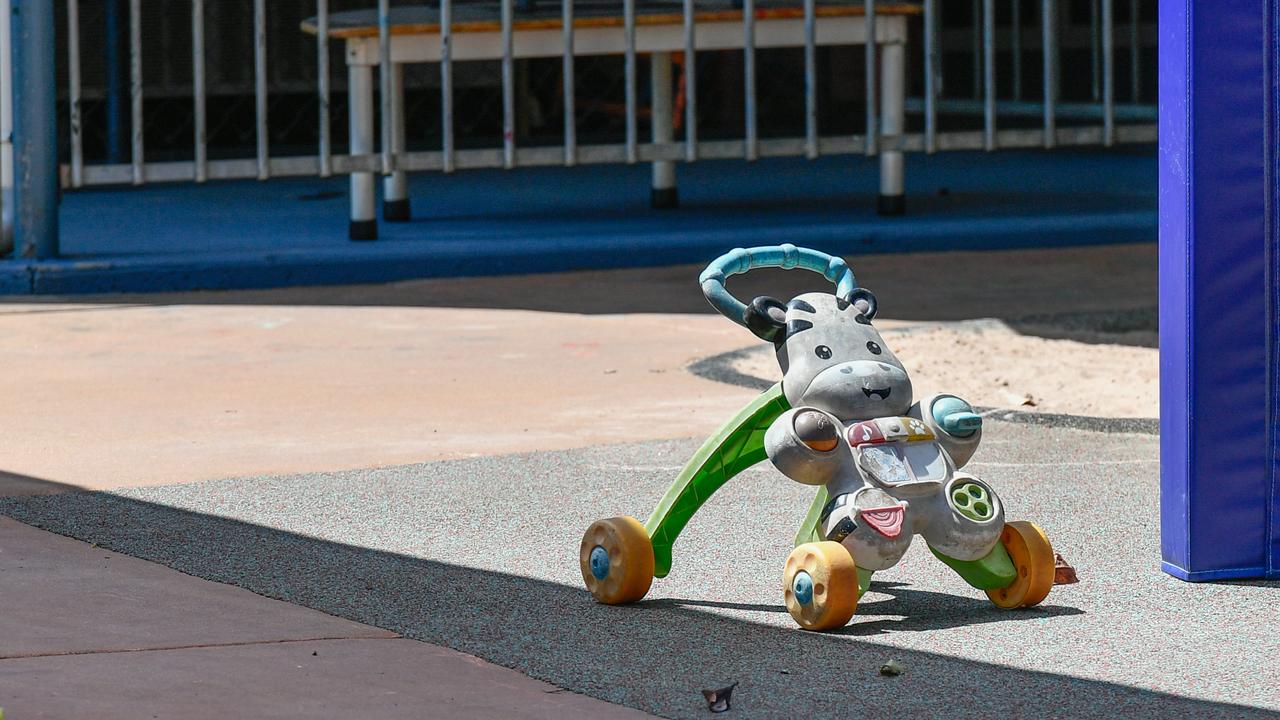NT Coroner Elisabeth Armitage tours triple-0 centre in Ngeygo Ragurrk inquest
‘He just killed mum’: Triple-0 operators have shared with the NT coroner the calls that haunt them as domestic violence rates spike.

Police & Courts
Don't miss out on the headlines from Police & Courts. Followed categories will be added to My News.
A triple-0 operator’s calm voice hides her panic as a Palmerston mum threatens to take her child’s life as well as her own in a potential murder-suicide.
But in an emergency call centre where every second counts, the operator is powerless to act and half an hour later — there are still no police at the scene.
Over seven days of evidence at an inquest into the death of Ngeygo Ragurrk, NT Coroner Elisabeth Armitage has been told the understaffed call centre had to leave urgent jobs for hours, with too few crews available to respond to the scale of domestic violence.
But on Tuesday night Ms Armitage saw the startling reality of the Joint Emergency Services Communication Centre for herself.
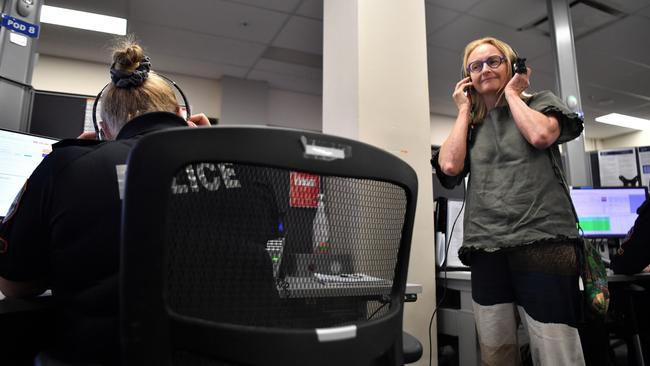
Through a headset Ms Armitage listened as a Palmerston man told one of the three triple-0 operators on duty that his loved one had threatened to kill herself.
“If you want police to help you have to talk to me,” the operator told the distressed man.
“How is she going to do it?”
The operator was silent as he explained her plan.
“She’s going to take the kids with her.”
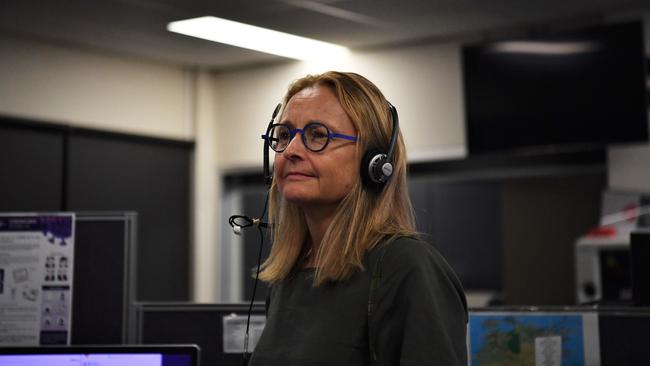
After confirming where to send police, the operator told the man “you’re a hero”.
But half an hour later, Ms Armitage was told there were no crews available to help the suicidal mother — or her five-year-old child.
“They’re all tried up in jobs,” an operator told the coroner.
Even with an extra crew sent from Humpty Doo, the local units were responding to other urgent jobs, including a machete-wielding person threatening others.
And there were still 27 other Palmerston jobs appearing on the screen, with up to 40 waiting incidents on the Darwin logsheet.
In emotional testimony, JESCC dispatch Sergeant Wolfgang Langeneck explained to the coroner the specific trauma in the “powerlessness” of being on the other end of a phone.
He told her about a recent June call where his team listened in as a child was trapped in a fatal Alice Springs house fire.

“She couldn’t help, they had to wait for the fire brigade,” he said
“And she was shattered after that incident.”
Sergeant Langeneck remembered one call where a small voice told him: “He just killed mum”.
“Calls from children are very distressing to the call takers,” he said.
The coroner was also told that the often junior, interstate officers struggled with cultural and language barriers, with up to 70 per cent of emergency calls difficult to understand.

But with a headset on, Ms Armitage listened in real time as that communication delay placed a woman in immediate danger.
“Caller, I need to get his name so I can send police,” one operator said.
“Have you moved away? Is it safe now?”
As she tried to establish basic details, her neighbouring call operator struggled to hear another domestic violence victim over the yells of her partner.
“Stay on the phone with me, stay away from him,” she said.
“Are you bleeding? Is he still there now?”
According to the national standards, the average triple-0 call should take just four minutes but Sergeant Langeneck said this was an “unrealistic” goal for the Territory.

A screen above the triple-0 callers warned as their average call handle time ticked over four minutes and 56 seconds.
The supervisor for the night, Sergeant Donna Cayley, told the coroner her team was understaffed on Tuesday night, missing one call taker and a floor supervisor.
From midnight to 9pm, the team had lost 61 triple-0 calls out of 351, after Territorians hung up while waiting on the line.
More than 40 calls to 131 444 were also dropped, while the current wait time reached five minute, 14 seconds — well below the 30 second target.
Even with the relatively “quiet” night — a word banned in the superstitious triple-0 centre — Sergeant Cayley said the screens would continuously flash red from missed targets.
At the dispatch unit she pointed out to Ms Armitage an urgent domestic violence job where there had been threats to kill the victim.
“That’s happening right now and we can’t get a crew to go to it,” she said.

Ms Armitage watched as an “all units” request was sent out, before a team at a station eventually picked up the job.
“At the end of the day, we are police and we have to respond,” Sergeant Cayley said.
She said by the end of the night there could be 170 jobs on the screen still without a police response.
Ms Armitage was also told the frontline cops did not always have the full picture of what they were running into.
Northern Watch Commander Tanya Woodcock explained how Channel Two operators could check different databases for police alerts, criminal histories and domestic violence orders.
“(But) there’s 135 jobs on the screen at the moment and one Chanel 2 operator,” she said.
“And it takes 20 minutes to do these checks.”

Even as she spoke there were four reports of armed persons active in the system, not all of which could have a full risk or tactical intelligence assessment before police were sent out.
Sergeant Cayley said the most shocking thing about the centre was seeing the impact of alcohol, with the Tuesday night tour occurring during a takeaway booze-free night in Alice Springs.
“It does give us a reprieve,” she said.
She said nights with alcohol were like the “full moon”, unleashing “phenomenal” harm into the community.
“I could not comprehend it when I started,” she said.
“When you know what is happening in the background you know what kind of night you’re going to have.”
IN PICTURES: The other side of triple-0 calls
More Coverage

